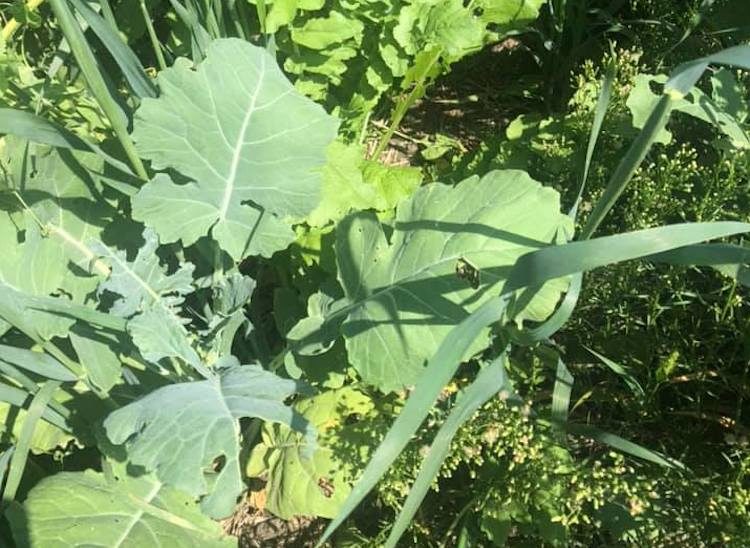Changes in federal grazing and harvesting rules on prevented-planting acres could help North Dakota livestock producers in select counties replenish forage supplies, or at least offset shortages in perennial forage production, according to North Dakota State University Extension livestock specialists.
The U.S. Department of Agriculture (USDA) will allow producers to graze, hay or cut cover crops on prevented-planting acres beginning Sept. 1. Counties that qualify must have 15% or more acres classified as prevented plant.
Many livestock producers in the region are short on forage due to challenging harvest conditions last fall and drought during key times for forage production. Many ranchers are reporting reductions in hay and forage production due to the precipitation deficit.
“The change in the allowable harvesting or grazing date to Sept. 1 on prevented-planting acres gives livestock producers an opportunity to offset the shortage of forage supplies while adding flexibility to their grazing program,” says Miranda Meehan, NDSU Extension livestock environmental stewardship specialist.
Cover crops produce a high-quality forage and extend the grazing season while allowing rangeland and pastures adequate time to recover. Here are a few things ranchers should consider when grazing or harvesting cover crops for forage.
“Test forage to ensure the feed meets the nutritional requirements of your livestock class,” says Kevin Sedivec, NDSU Extension rangeland management specialist. “This is especially important when grazing cover crops because quality can vary, depending on the forage species, varieties and maturity. Forage quality parameters to be most concerned with include crude protein, digestibility and fiber level, as well as minerals.”
Brassicas, such as turnips and radish, often are incorporated into cover crops mixes as a high-quality forage. Research on species and variety of brassicas conducted at NDSU reported crude proteins of 14% to 27% and total digestible nutrients of 70% to 80%. In addition, brassicas can contain as much as 80% water, depending on the timing of grazing.
This combination of high protein and water content can disrupt rumen function if high-fiber plants such as millet, sorghum, sudangrass and corn are not included in the mix. Ranchers may need to provide low-quality supplemental fiber, such as low-quality hay or straw, to increase intake and maintain performance.
Many species of cover crops have the potential to be toxic to cattle. Producers must be aware of potentially toxic species, conditions that increase the risk of toxicity and grazing management practices that reduce the potential of cattle consuming toxic forage. The most common toxicities associated with cover crops include hydrocyanic acid (HCN), nitrate and sulfur.
Hydrocyanic Acid (HCN)
Forage sorghum, sudangrass and hybrids contain HCN in the leaves and steams. The concentration of HCN depends on the species, variety, maturity, plant injury and environmental damage (hail and frost). The concentrations of HCN decrease as the plant matures. Damage or injury to the plant from hail, insects, frost or harvest breaks cells and releases the toxins.
These grazing management strategies reduce the potential for HCN toxicity:
- Delay grazing livestock until forage is 18 to 24 inches tall.
- Avoid grazing regrowth under 12 inches.
- Do not graze following hail or a light frost. Grazing after a killing frost is safe because the HCN dissipates quickly after the plant dies.
Nitrates
Nitrates can accumulate in small-grain forages (wheat, oats, rye, triticale and barley), sorghum, sudangrass and corn. When plants encounter stressful growing conditions, photosynthesis is inhibited and the potential for accumulation of nitrates is increased. Elevated nitrate levels commonly are associated with drought stress, but nitrate also can accumulate during prolonged periods of cool, cloudy weather.
These strategies can help reduce the risk of nitrate poisoning when grazing:
- Do not move hungry cows.
- Provide cattle with roughage to reduce the amount of nitrate ingested.
- Do not overstock pastures when grazing high-nitrate forages. Overstocking increases the amount of high-nitrate plant parts (stems and stalks) that cows consume.
“If you are planning to harvest cover crops as a hay, it is important that the cover crop does not include or is low on brassicas,” says Janna Block, Extension livestock systems specialist at NDSU’s Hettinger Research Extension Center. “Brassicas have a high water content and will not dry down enough to make a high-quality hay. Monocultures or mixes of cereal grains and warm-season grasses will be able to cure, producing a high-quality forage.”
Producers planning to harvest as silage/haylage have a bit more flexibility because drying to an acceptable level for curing isn’t as critical. Harvesting before a freeze is important to achieve silage because desired moisture conditions need to be 65% to 70% for a bunker and 60% to 68% for silo bags.
A hard freeze will reduce the moisture content dramatically within 24 to 48 hours. Haylage can be put up at a lower moisture level (40% to 60%), so harvesting in late September to early October is possible.
If haylage will be your final feed produced, eliminate the brassicas in the mixture because they will be difficult to dry down to less than 60% before mid-October and the other plants in the mixture will be too dry following a hard frost.
Crop producers who planted cover crops on prevented-planting acres to suppress weeds and enhance soil health have an opportunity to market this forage to livestock producers. The NDSU Feedlist (https://www.ag.ndsu.edu/feedlist/) can connect crop producers who have forage with livestock producers who need it.






